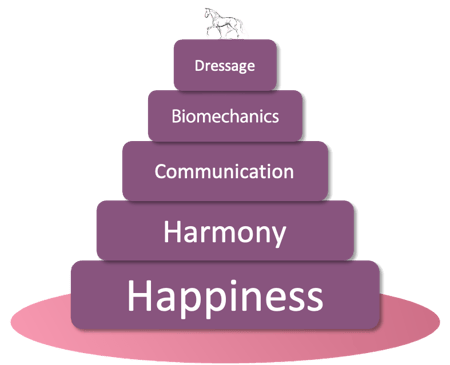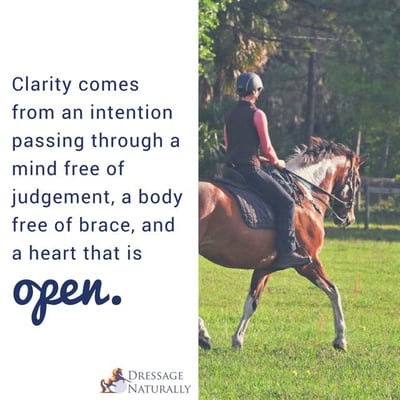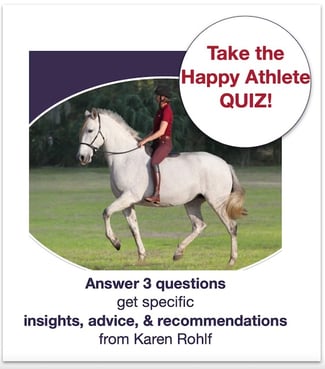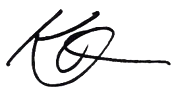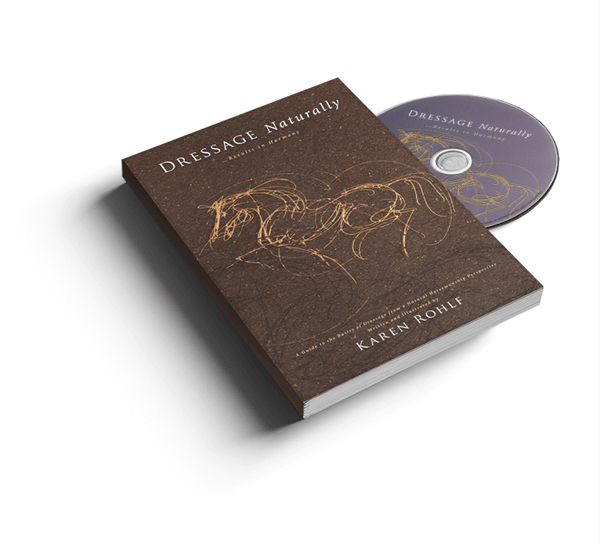I've coached students from multiple disciplines and levels on a variety of breeds of horses, coming from a range of backgrounds and experiences. Not everyone is starting in the same place. Not everyone needs to start with the same solutions. To continue making progress, most people need help seeing themselves and figuring out how to break the pattern of behavior they are in.
I created the Dressage Naturally Happy Athlete Training Scale as a method of prioritization to help you keep a whole-horse perspective as you develop your dressage horse.
Why is it called a Happy Athlete training scale? It's not just because it is the heart of the intention of Dressage Naturally. It's not just because I think it feels better to have a happy equine partner... Article 401 of the FEI dressage rule book states that the Object Of Dressage is the development of the horse into a happy athlete.
So what does that really mean, and how do you do it?
The rest of this blog will explain it, but if you are ready now for some help creating your own happy athletic partnership with your horse, click HERE to take the Happy Athlete Quiz.
The Dressage Naturally Happy Athlete Training Scale
Beginning with the end in mind, the base of the training scale is happiness. It's important that both the human and the horse are happy individuals. Happy individuals can more easily find harmony together. Harmony is created through the art of relationship, and finding ways of navigating challenges together. Happiness & Harmony together is what I call a Foundation Of Partnership. It is a state of being and an attitude towards one another.
The next priority is the quality of communication. Individuals in harmony will be better able to communicate with each other and will be more likely to see communication as a two-way street where listening is as important as speaking.
Happy, harmonious individuals who communicate well will be better able to create healthy biomechanics. They will see this as an artful process of finding a movement dynamic together rather than simply a manipulation of the body. They will therefore choose techniques that are more playfully precise rather than using force or strong or constricting equipment.
The art of developing your horse's gymnastic skills (a.k.a. dressage) will have a much better chance for success with all the other pieces in place. So many times dressage problems are not really dressage problems. They are actually problems with Happiness, Harmony, Communication, or Unhealthy Biomechanics that are showing up in the dressage practice.
It's Complicated
The Dressage Naturally Happy Athlete Training Scale is true and useful, AND, life is often more complicated than that. The reality is it can be hard to determine the source of problems. We get used to thinking our horse's behaviors are happening because it's 'just the way they are'.
Most of the students who come to me are not clean slates. They and their horses have had challenges. Their horses may have had difficult training experiences in the past. The student may have had difficult training experiences also. So, in the middle of this messy reality, where do you start, and what should you focus on?
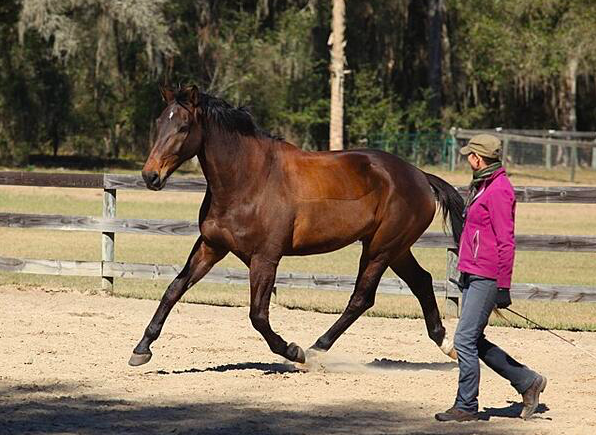
3 Questions:
There are so many things to think about and improve with our horses. It can be hard to figure out where to begin. Start by forgetting the dressage (or whatever discipline you do with your horse) and focus on these 3 main categories:
- Foundational Partnership
- Quality Of Communication
- Techniques For Healthy Biomechanics
Each of those are big topics, so let's start with an overview of each:
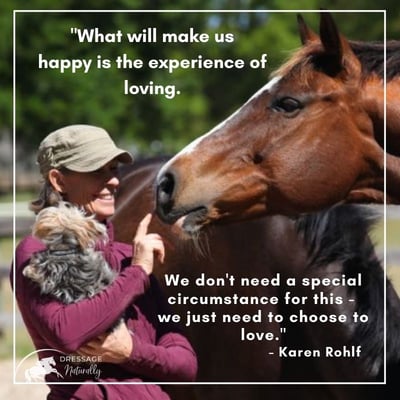
Foundational Partnership:
This is the Happiness/Harmony piece. Ask yourself how happy you and your horse are as individuals, and how happy you are with each other (harmony). Problems in this area can lead to chronic, pervasive, hard-to-diagnose problems elsewhere.
Quality Of Communication:
This is about determining how well you and your horse understand each other. Look at how well you and your horse express what you each want, and how well you listen to each other. It is important that you and your horse have the ability to move through confusing or frustrating moments and create positive emotional states by mastering clear communication.
Problems in this area can lead to over-use of strong aids and lack of motivation.
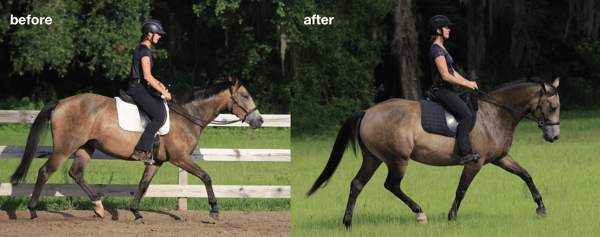
Techniques For Biomechanics:
Being a 'good mover' is not enough. It's important to assess how you and your horse interact together to achieve a healthy balance and movement dynamic. Focusing on a 'shape' alone rather than an artful interaction of balance, suppleness, and freedom can lead to brace, irregularities, and undue wear and tear on the body.
It's Complex
The Happy Athlete Training Scale illustrates the priority of the development of these qualities. However, as I mentioned earlier, the reality is that most horses and riders have a mixed bag of qualities. It is possible for a horse to win the Olympics and have a low degree of happiness. It is possible for there to be a horse who moves with balance and freedom, who is happy and harmonious with his human in most moments, but the level of communication is still low. The rider might let the horse do mostly what he wants, so they cruise around on their good looks but the horse is not open to suggestions.
Everyone needs different directions
It's important to have a guideline for navigating the complexities of horse training. The Happy Athlete Training Scale and Quiz are designed to be useful tools. It will help you prioritize and make decisions, but it is also a destination. In the life of a happy athlete, a lot of time is spent being happy, and a little amount of time is spent doing dressage. It seems obvious, but I have known many horses and riders who spend a lot of time doing dressage and very little time being happy about it.
Because everyone is unique, the path taken to achieve this state will look slightly different. Directions from your house to my house will look quite different if you are starting from New York versus California!
Subtle Differences In Strategy:
Even small differences between one horse and rider and the next can require very different strategies. Below I'll describe 2 students who took the Happy Athlete Quiz and had a difference of only a couple points in how they assessed themselves, yet my advice to each was quite different.
Student 1:
Student 1 rates themself as Medium in their Happiness/Harmony, Medium in Quality Of Communication, and Medium in Techniques For Biomechanics.
This person likely feels like things are 'pretty good' and while they may agree with the concept, they may not think they need to go 'all the way back to basics'. My recommendation for this person would be to take a multi-pronged approach. I would send them to resources where they would keep doing everything they are doing, but start to see how better quality of communication can improve the happiness/harmony, and how better happiness/harmony can result in more freedom of movement, etc.
Small improvements in any area will begin a cycle of 'everything helps improve everything'. This will create renewed motivation and will help them break free of the rut of 'pretty good' and put them on an upward spiral towards amazingness!
Contrast this with someone who is only slightly different than the example above.
Student 2:
Student 2 rates themself as Medium in Communication, Medium in Techniques for Biomechanics, but LOW in Happiness/Harmony, I would highly recommend that they dive deep into the Foundational Partnership. Chances are, the low level of Happiness/Harmony is the reason why the other categories are not going better. Working harder to get better answers and movement from the horse without having some real strategies for being happier and more harmonious will likely strain the relationship further.
For this person, it is often a mindset shift along with some implementable techniques for improving partnership that can totally shift the context of the relationship. When there is more harmony, the quality of communication will naturally improve. As communication improves, the techniques for biomechanics will become easier.
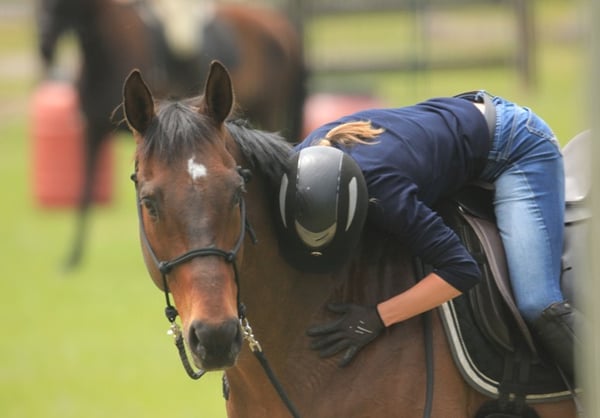
Step 1: Self-Assessment
The first step to getting where you want to go is to know where you are right now.
How would you rate the level of Happiness/Harmony you have with your horse?
How would you rate the Quality Of Communication you have with your horse?
How would you rate the ease of creating Healthy Biomechanics with your horse?
Your answers to those questions will be the best start for creating your strategy for improvement...
Step 2: Get Help
I created the Happy Athlete Quiz to walk you through your self-assessment. You answer 3 questions, and based on the answers I give you specific insights, advice, and recommendations, similar to the example above, but with more depth.
Each result page is specific to where you and your horse currently are. I'm really happy to offer you this Happy Athlete Quiz as a tool for your success. It's totally free and will take only a couple of minutes to complete.
Onward, Upward...


